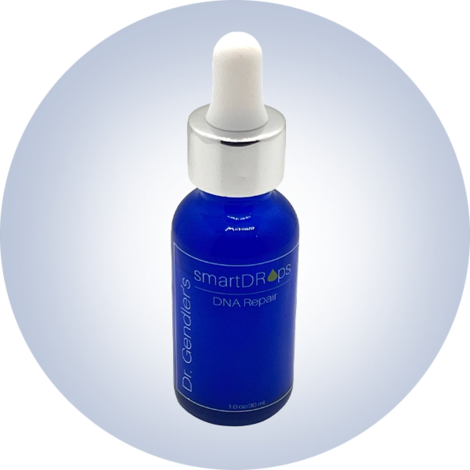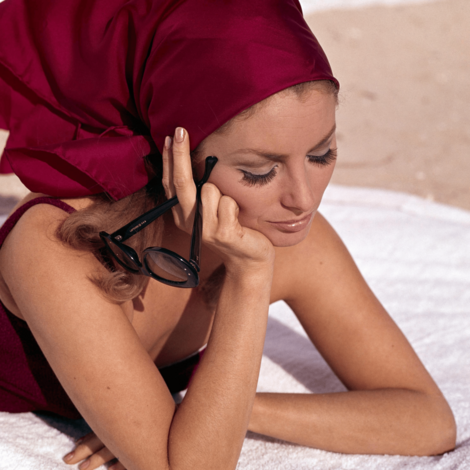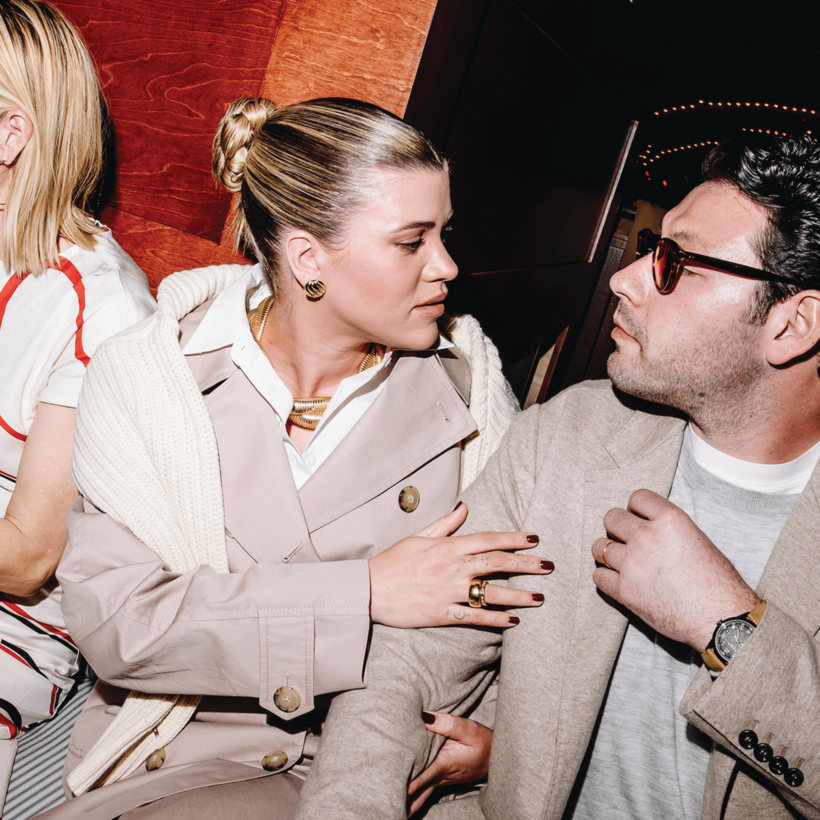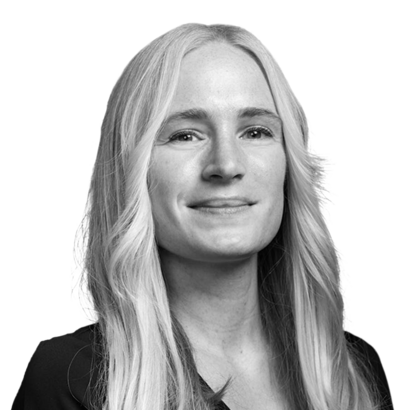May we all re-invent ourselves after our bad exes the way Sofia Richie has after Scott Disick. Since the two split in 2020, Richie, now Richie Grainge and even rich-ie-er, has become a lighthouse of “quiet luxury.” Though certainly not a rags-to-riches story—Richie Grainge is Lionel Richie’s daughter—her rich-to-different-kind-of-rich story is satisfying for anyone plotting a pivot.
Days before her April 2023 wedding, to record executive Elliot Grainge, son of record executive Lucian Grainge (recently dragged into the trial of Sean “Diddy” Combs), Sofia launched a TikTok. “I didn’t think anyone would care,” she told Porter of her wedding and honeymoon videos, but she hurled 12 of them into the supposed vacuum anyway. The posts now have a combined 150.5 million views.
She touted Chanel with three custom-made Chanel dresses, and touted Hourglass Cosmetics as well, spawning scores of posts tagged #oldmoney and/or #quietluxury. One commenter on Richie Grainge’s Instagram recently called it “the wedding that launched a new era of influencing.”
In the past year, by our count, Richie Grainge has had partnerships, collaborations, or ambassadorships with 19 brands. She lovingly picked an unresisting pear in an orchard for Jo Malone London. Lips slightly parted in comely concentration, she posed while affixing a swatch to a board for a Solid & Striped collection, where she was the “co-designer.” She romped in pajamas with her dachshund for Matilda Djerf’s company, Djerf Avenue, then again—this time with a different, more glamorous dachshund and a pronounced baby bump—for Stuart Weitzman’s “Sofia” collection. Other partners include David Yurman, Nexxus, Prada Beauty, Sol de Janeiro, and Tommy Hilfiger. Her luxury is quiet the way someone whispering into a hot mike is quiet.
Her rebrand was so swift, and her endorsements so many, that the Internet took note. One Redditor called her a “complete PR production”; another suggested her marriage was a ploy to raise her social status—“AND IT WORKED,” the commenter noted. Casey Lewis, who writes a newsletter about youth consumer trends called After School, rounded up some of the brands in Richie Grainge’s portfolio in a TikTok, positing that she may be reveling in her move from the D-list, where she hovered while dating Disick. “Prada Beauty was not clamoring to partner with her,” Lewis says. “She’s probably wanting to say yes to everything while she can because she knows that this fame may not last.”
One commenter on Richie Grainge’s Instagram recently called it “the wedding that launched a new era of influencing.”
I’ve wondered whether Richie Grainge was using sponsored posts to build momentum for her own brand: in September, she teased what appeared to be an eponymous dress collection on Instagram, then told WWD she was planning to launch a brand that was “not a collaboration or a capsule.” But the items turned out to be part of her Solid & Striped collection, and I’ve since arrived at a more banal hypothesis: I think Richie Grainge is nesting, gathering ads and attention like a squirrel preparing for hibernation. (Through her agent, Richie Grainge declined to speak to Air MaiL LOOK, citing maternity leave. Her daughter was born on May 20.)
Many onlookers are less concerned with why Richie Grainge was making so many ads than how. “Are the brands not paying her enough to demand exclusivity in their category?” one TikToker wondered in the comments for Lewis’s video. In the Richie Grainge–ad Venn diagram, she touches many overlapping circles: two hair brands, five in makeup, three in skin care, three in apparel, and one each in fitness, fragrance, footwear, jewelry, nail care, and tech (Google). How has she been able to profess her fidelity to so many similar goods?
Even five years ago, influencers generally sought a few monogamous relationships with sponsors. Now the influencer economy is an orgy. “The demand from the client side, from advertisers, is much higher than the number of influencers,” says Nils S. Borchers, of the University of Tübingen, in Germany, a co-author of a study that explored how plugging multiple products affects consumers’ opinions of both the shiller and the shilled. There may seem to be a bottomless well of influencers, Borchers adds, but brands need someone who gives the impression of affinity with their products. Right now, influencers are enjoying a seller’s market.
“I’m a true believer that you can endorse as many categories as you can be authentic to, be accountable to, have capacity for,” says Mark Zablow, C.E.O. at Cogent World, which matchmakes companies with artists and influencers. He points to two extremes: Tom Brady, who was selective about his endorsements throughout his career, and Michael Jordan, who harmlessly promoted batteries, hot dogs, and more. But Zablow believes the seesaw is tilting Michael Jordan–ward. More influencers are hawking more products, and brands are more tolerant of potential overlap. Until recently, he rarely saw someone working with two different companies in the same sector from one year to the next.
“Maybe back in the day, a beverage brand would say you can’t work with any other non-alcoholic beverages. And now maybe they’re saying you just can’t work with any other carbonated beverages. Or maybe you just can’t work with any other waters. So exclusivity, across the board, is being more flexible,” Zablow tells me.
Richie Grainge is certainly not the only influencer whose ad-to-content ratio has shifted dramatically in recent years. In 2022, Sydney Sweeney commented on her sponcon binge in The Hollywood Reporter. “If I just acted,” she said, “I wouldn’t be able to afford my life in L.A. I take deals because I have to.” Audiences responded with empathy, and Sweeney has apparently doubled down since then: her Instagram is a cornucopia of ads for Armani Beauty, the antioxidant water Bai, Jimmy Choo, Kérastase, and Laneige—and that’s just since March.
“I do think that there’s more of a sense of ‘get that money’ with Gen Z,” Lewis tells me, speculating that because so many Gen Z–ers have either thought about becoming or have attempted to become influencers, “There’s more of an awareness that it’s not easy. There’s some respect there.”
Lewis points to Alix Earle as an example of an influencer who has executed brand partnerships without compromising her identity. Her sponsored TikToks are funny and candid, Lewis says, making Earle’s fans feel like they’re “in on it.” For instance, Earle recently posted a behind-the-scenes TikTok featuring her dancing and cheering after popping a bottle of champagne for a commercial in a near-silent room. It was knowingly uncomfortable.
Richie Grainge, unlike Sweeney, can afford her L.A. life. And unlike Earle, she doesn’t have that easy candor. Shunyuan Zhang, an assistant professor at Harvard Business School, and her colleague Mengjie Cheng have studied the effect of “reputation burning,” the loss of followers after posting sponsored content, and found that the effect can be just a singe if a partnership feels well aligned. “You want to find a brand that fits your expertise,” Zhang says. “You want to make sure the style of the content is consistent with your usual style.” Zhang believes some creators can manufacture a sense of consistency by, for example, priming their audience for a sponsored skin-care post with a series of skin complaints weeks before.
That won’t work for Richie Grainge; her skin is flawless. But she doesn’t really have to do much priming anyway. When your identity is wrapped up in ads, any brand is on-brand.
Lauren Larson is an Austin, Texas–based writer and editor. Her work appears in GQ, Texas Monthly, The New York Times, and New York magazine





